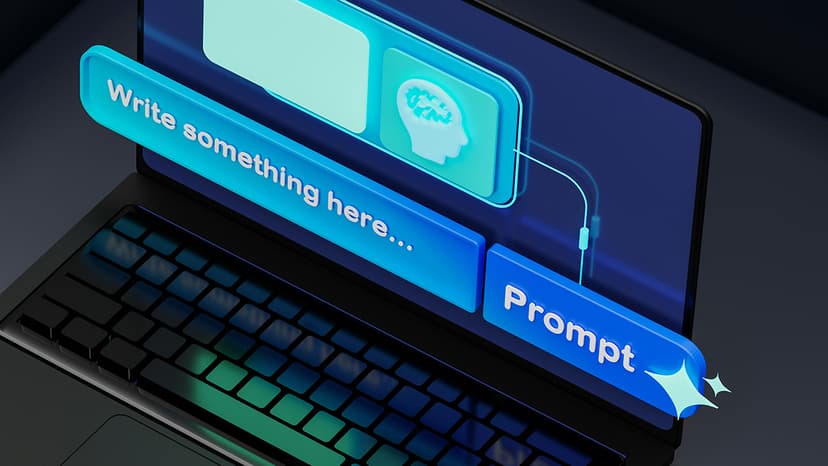Can AI Be a Good Chef?
The culinary world is evolving, and AI is stepping into the kitchen. With the rise of AI recipe generators, many people wonder if these digital chefs can match the creativity and intuition of human cooks. Can AI not only recommend recipes but also create delightful dishes? This article explores the capabilities of AI in cooking, comparing AI-generated recipes with classic human recipes through two popular dishes.
AI-Generated Recipe vs. Traditional Recipe
To clearly showcase the differences between AI-generated and human-crafted recipes, let’s compare two iconic dishes: Spaghetti Carbonara and Beef Stew. These examples highlight where AI shines and where it falls short.
Example 1: Spaghetti Carbonara
AI-Generated Recipe:
Ingredients:
- 200g spaghetti
- 100g pancetta, diced
- 2 large eggs
- 50g grated Parmesan cheese
- 2 cloves garlic, minced
- Salt and black pepper to taste
- Fresh parsley, chopped (optional)
Instructions:
- Cook spaghetti in salted water until al dente. Reserve some pasta water.
- Sauté pancetta until crispy. Add garlic and cook briefly.
- Beat eggs in a bowl and mix in Parmesan cheese.
- Combine spaghetti with pancetta and garlic. Remove from heat.
- Pour egg mixture over the pasta, tossing quickly to make a creamy sauce. Use pasta water as needed.
- Season with salt and pepper. Garnish with parsley if desired.
Classic Human Recipe:
Ingredients:
(Same as AI recipe, but with Pecorino Romano cheese and guanciale for authenticity)
Instructions:
- Cook spaghetti until just al dente.
- Sauté guanciale until it renders its fat, creating a rich base.
- Mix egg yolks (not whole eggs) with Pecorino Romano and a dash of pasta water to create a creamy mixture.
- Add spaghetti to the guanciale, tossing to coat. Remove from heat before adding the egg mixture to prevent scrambling.
- Toss vigorously, adding pasta water as needed for the perfect consistency.
- Season with black pepper and serve immediately.
Comparison:
- Ingredients: The AI recipe opts for widely available pancetta and Parmesan, while the human recipe relies on traditional Italian ingredients like guanciale and Pecorino Romano.
- Technique: The human recipe includes steps to develop depth, such as rendering guanciale fat and using only egg yolks for creaminess. AI simplifies the process but sacrifices authentic flavors.
Example 2: Beef Stew
AI-Generated Recipe:
Ingredients:
- 1 lb beef stew meat, cubed
- 3 medium carrots, sliced
- 3 medium potatoes, cubed
- 1 onion, chopped
- 2 garlic cloves, minced
- 3 cups beef broth
- 1 cup red wine
- 1 tbsp tomato paste
- 2 tbsp olive oil
- 1 tsp dried thyme
- Salt and black pepper to taste
- 1 bay leaf
Instructions:
- Brown beef in olive oil and set aside.
- Sauté onions and garlic in the same pot.
- Add tomato paste and deglaze with red wine.
- Combine beef, carrots, potatoes, broth, thyme, and bay leaf in the pot.
- Simmer on low for 1.5–2 hours until beef is tender.
- Season and serve hot.
Classic Human Recipe:
Ingredients:
(Same as above, but with optional additions like rosemary or Worcestershire sauce for extra depth.)
Instructions:
- Coat beef in flour for a rich sear and thicker sauce. Brown in butter, not just olive oil.
- Sauté onions, garlic, and optional celery for an aromatic base.
- Bloom tomato paste by cooking it briefly before deglazing with wine.
- Add rosemary and bay leaves to build layers of flavor.
- Simmer on very low heat for up to 3 hours, allowing the stew to develop complexity.
Comparison:
- Flavor Depth: The human recipe includes flour-coated beef for richness and optional ingredients like rosemary to elevate the dish. AI’s version is efficient but lacks nuanced touches.
- Time: AI prioritizes speed and simplicity, while human recipes embrace longer cooking times for superior results.
The Strengths of AI in Cooking
AI recipe generators like DishGen or ChefGPT excel in providing quick, accessible meal ideas tailored to ingredients, diets, or preferences. They’re especially useful for:
- Simplifying Meal Planning: Quickly generate recipe ideas based on what’s in your pantry.
- Customization: AI can account for allergies, calorie limits, or cuisines, making it versatile for different needs.
- New Flavor Pairings: AI can suggest creative combinations (e.g., adding miso to brownies) based on vast recipe datasets.
The Human Advantage
Cooking is more than just combining ingredients. Human chefs bring intuition, creativity, and cultural knowledge to the kitchen. They know how to adjust seasoning based on taste or understand why a dish needs more time to develop flavors.
For example:
- Chicken Curry: Humans might brown onions longer for richness, toast spices for depth, or let the curry simmer for an hour to meld flavors—all steps AI might skip for simplicity.
- Chocolate Chip Cookies: Human bakers chill the dough to control spread and enhance texture—details often missing from AI recipes.
AI-generated recipes are excellent tools for quick solutions and inspiration. But the subtleties of cooking—layering flavors, cultural traditions, and sensory understanding—remain best in human hands. Blending AI’s efficiency with human intuition might be the perfect recipe for culinary success.












